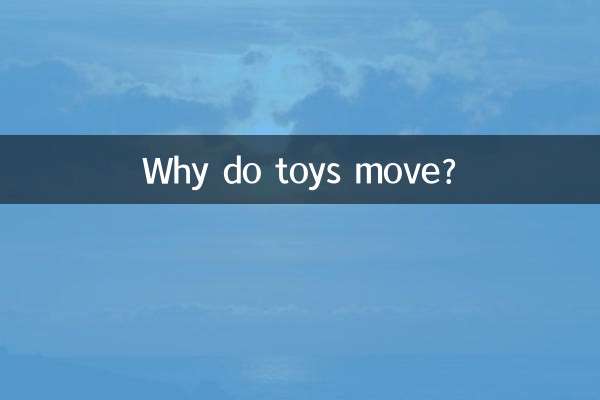How many categories of toys are there? Explore the hottest toy trends around the world
In the past 10 days, many hot topics have emerged in the global toy market. From the revival of classic toys to the rise of high-tech smart toys, consumer demand for toys has shown a diversified trend. This article will systematically sort out the classification of toys based on hot content from across the Internet, and display the most popular types of toys through structured data.
1. Five core categories of toys

According to dimensions such as function, material, and applicable age, toys are usually divided into the following five categories:
| Classification | Features | Popular examples |
|---|---|---|
| educational toys | Promote logical thinking and practical ability | Lego, puzzles, programming robots |
| electronic toys | Integration of sound and light technology or intelligent interaction | Intelligent conversation robot, AR dinosaur |
| role play toys | Simulate social roles and develop social skills | Kitchen toys, doctor sets |
| sports toys | Improve physical fitness and coordination | Skateboards, balance bikes, shooting machines |
| collectible toys | Limited edition or IP co-branded, with collection value | Blind boxes, star cards, animation figures |
2. Recent hot toy trends (data in the past 10 days)
By analyzing social media and e-commerce platforms, the following are the types of toys that are currently being discussed the most:
| trend category | Popular reasons | Representative products |
|---|---|---|
| Nostalgic replica toys | Adult consumer nostalgia driven | Transformers 40th Anniversary Series |
| Environmentally friendly materials toys | Parental concerns about sustainability | Bamboo building blocks, corn fiber dolls |
| STEM educational toys | Policies to promote science education | programmable drone |
| virtual bonding toys | Metaverse concept extension | NFT entity linkage figure |
3. Age-stratified toy selection guide
Different age groups have significantly different needs for toys. The following is a matching solution recommended by professional organizations:
| age stage | Suitable for toy types | development goals |
|---|---|---|
| 0-3 years old | Sensory stimulation toys | Tactile development, basic cognition |
| 3-6 years old | creative construction toys | Spatial imagination, fine motor skills |
| 6-12 years old | strategy toys | Teamwork, problem solving |
| Over 12 years old | High Tech/Collectible Toys | Interest exploration, emotional satisfaction |
4. Future Prospects of the Toy Industry
With the popularization of AI technology and sustainable development concepts, the toy industry in the future may exhibit the following characteristics:
1.Personalized customization: 3D printing technology allows users to participate in toy design
2.Strengthening educational attributes: A UNICEF report shows that 75% of parents value the educational functions of toys more.
3.Fusion of virtual and reality: As shown in Nintendo’s new patent, data exchange between physical toys and mobile games
Through this structured analysis, we can clearly see that toys are not only entertainment tools, but also important carriers of educational functions, scientific and technological exploration, and social culture. When choosing toys, consumers should comprehensively consider safety, educational value and children's interests.

check the details

check the details